2,6-Dichlorobenzamide
- CAS NO.:2008-58-4
- Empirical Formula: C7H5Cl2NO
- Molecular Weight: 190.03
- MDL number: MFCD00007975
- EINECS: 217-918-4
- SAFETY DATA SHEET (SDS)
- Update Date: 2024-12-18 14:08:52
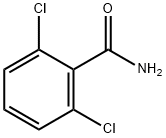
What is 2,6-Dichlorobenzamide?
Chemical properties
white to brown-grey crystalline powder
The Uses of 2,6-Dichlorobenzamide
2,6-Dichlorobenzamide is the persistent metabolite of herbicide 2,6-Dichlorobenzonitrile (D431945).
Definition
ChEBI: A member of the class of benzamides that is benzamide substituted by chloro groups at positions 2 and 6.
Metabolic pathway
Oral doses of DCB are excreted by rats as DCB, two monohydroxy-DCBs, 2-chloro-5-hydroxy-6- (methylthio)benzamide, and 2-chloro-5-hydroxy-6-[S- (N-acetyl)-cysteinyl]benzamide. Biliary excretion (33% of the dose), enterohepatic circulation, and intestinal microfloral metabolism are involved in the formation of 2-chloro-5-hydroxy-6-(methylthio)benzamide. The major route for the metabolism of DCB is the conjugation with glutathione in a process involving phenyl ring hydroxylation at the ortho position to the S-glutathionyl moiety. Two mechanisms can be processed for the formation of hydroxylated metabolites resulting from the epoxidation at the 2- and 3-positions of the phenyl ring (for the proposed mechanisms: see the text).
Properties of 2,6-Dichlorobenzamide
| Melting point: | 196-199 °C(lit.) |
| Boiling point: | 266.5±30.0 °C(Predicted) |
| Density | 1.2860 (rough estimate) |
| refractive index | 1.5500 (estimate) |
| storage temp. | -20°C Freezer |
| solubility | Acetone (Slightly), Methanol (Slightly) |
| pka | 14.73±0.50(Predicted) |
| form | Crystalline Powder |
| color | White to brown-gray |
| Water Solubility | 2.7g/L(22.5 ºC) |
| BRN | 1869103 |
| CAS DataBase Reference | 2008-58-4(CAS DataBase Reference) |
| NIST Chemistry Reference | Benzamide, 2,6-dichloro-(2008-58-4) |
| EPA Substance Registry System | 2,6-Dichlorobenzamide (2008-58-4) |
Safety information for 2,6-Dichlorobenzamide
| Signal word | Warning |
| Pictogram(s) |
 Exclamation Mark Irritant GHS07 |
| GHS Hazard Statements |
H302:Acute toxicity,oral H315:Skin corrosion/irritation H319:Serious eye damage/eye irritation H335:Specific target organ toxicity, single exposure;Respiratory tract irritation |
| Precautionary Statement Codes |
P261:Avoid breathing dust/fume/gas/mist/vapours/spray. P305+P351+P338:IF IN EYES: Rinse cautiously with water for several minutes. Remove contact lenses, if present and easy to do. Continuerinsing. |
Computed Descriptors for 2,6-Dichlorobenzamide
New Products
Tert-butyl bis(2-chloroethyl)carbamate 4-Methylphenylacetic acid N-Boc-D-alaninol N-BOC-D/L-ALANINOL 3-Morpholino-1-(4-nitrophenyl)-5,6-dihydropyridin- 2(1H)-one Furan-2,5-Dicarboxylic Acid Tropic acid 1,1’-CARBONYLDIIMIDAZOLE DIETHYL AMINOMALONATE HYDROCHLORIDE R-2-BENZYLOXY PROPIONIC ACID 1,1’-CARBONYLDI (1,2-4 TRIAZOLE) N-METHYL INDAZOLE-3-CARBOXYLIC ACID (2-Hydroxyphenyl)acetonitrile 4-Bromopyrazole 5-BROMO-2CYANO PYRIDINE 5,6-Dimethoxyindanone 5-broMo-2-chloro-N-cyclopentylpyriMidin-4-aMine 2-(Cyanocyclohexyl)acetic acid 4-methoxy-3,5-dinitropyridine 2-aminopropyl benzoate hydrochloride 1-(4-(aminomethyl)benzyl)urea hydrochloride diethyl 2-(2-((tertbutoxycarbonyl)amino) ethyl)malonate tert-butyl 4- (ureidomethyl)benzylcarbamate Ethyl-2-chloro((4-methoxyphenyl)hydrazono)acetateRelated products of tetrahydrofuran
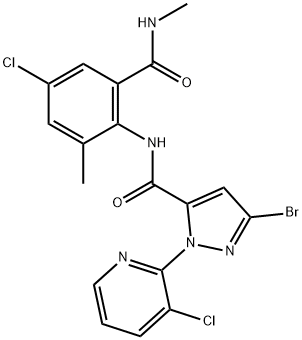
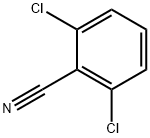
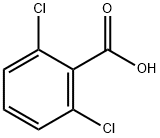


![N1-(2,6-DICHLOROBENZOYL)-2-[5-CHLORO-2-NITRO-4-(TRIFLUOROMETHYL)PHENYL]-2-METHYLHYDRAZINE-1-CARBOXAMIDE](https://img.chemicalbook.in/StructureFile/ChemBookStructure3/GIF/CB4393689.gif)
![[(([(2-CHLORO-3-PHENYLPROP-2-ENYLIDENE)AMINO]OXY)CARBONYL)AMINO](2,6-DICHLOROPHENYL)METHANONE](https://img.chemicalbook.in/StructureFile/ChemBookStructure2/GIF/CB4370642.gif)
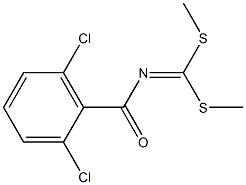
You may like
-
 2033-24-1 98%View Details
2033-24-1 98%View Details
2033-24-1 -
 1975-50-4 98%View Details
1975-50-4 98%View Details
1975-50-4 -
 2-HYDROXY BENZYL ALCOHOL 98%View Details
2-HYDROXY BENZYL ALCOHOL 98%View Details
90-01-7 -
 2-Chloro-1,3-Bis(Dimethylamino)Trimethinium Hexafluorophosphate 221615-75-4 98%View Details
2-Chloro-1,3-Bis(Dimethylamino)Trimethinium Hexafluorophosphate 221615-75-4 98%View Details
221615-75-4 -
 61397-56-6 CIS BROMO BENZOATE 98%View Details
61397-56-6 CIS BROMO BENZOATE 98%View Details
61397-56-6 -
 14714-50-2 (2-Hydroxyphenyl)acetonitrile 98+View Details
14714-50-2 (2-Hydroxyphenyl)acetonitrile 98+View Details
14714-50-2 -
 118753-70-1 98+View Details
118753-70-1 98+View Details
118753-70-1 -
 733039-20-8 5-broMo-2-chloro-N-cyclopentylpyriMidin-4-aMine 98+View Details
733039-20-8 5-broMo-2-chloro-N-cyclopentylpyriMidin-4-aMine 98+View Details
733039-20-8